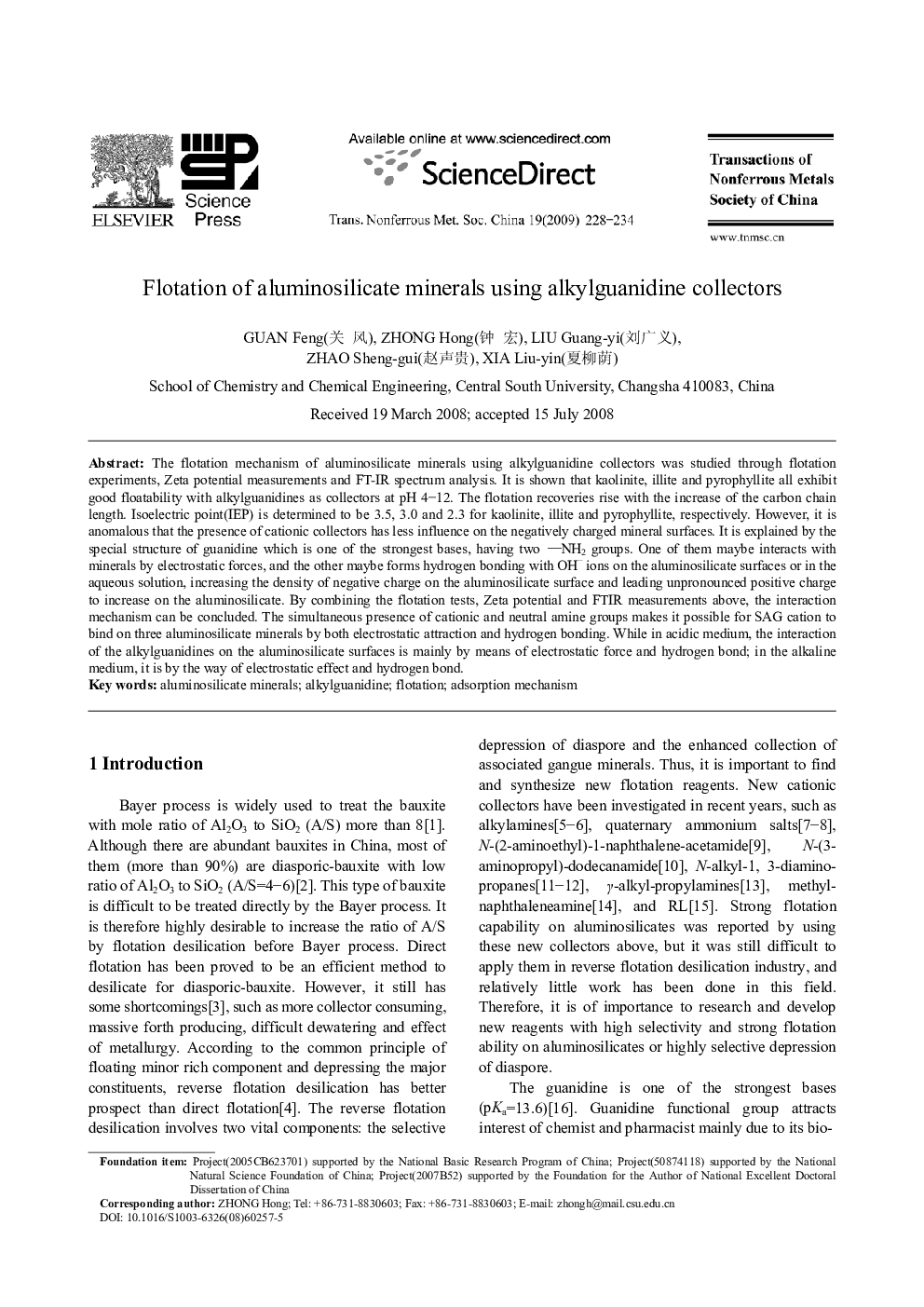| Article ID | Journal | Published Year | Pages | File Type |
|---|---|---|---|---|
| 1639526 | Transactions of Nonferrous Metals Society of China | 2009 | 7 Pages |
Abstract
The flotation mechanism of aluminosilicate minerals using alkylguanidine collectors was studied through flotation experiments, Zeta potential measurements and FT-IR spectrum analysis. It is shown that kaolinite, illite and pyrophyllite all exhibit good floatability with alkylguanidines as collectors at pH 4-12. The flotation recoveries rise with the increase of the carbon chain length. Isoelectric point(IEP) is determined to be 3.5, 3.0 and 2.3 for kaolinite, illite and pyrophyllite, respectively. However, it is anomalous that the presence of cationic collectors has less influence on the negatively charged mineral surfaces. It is explained by the special structure of guanidine which is one of the strongest bases, having two -NH2 groups. One of them maybe interacts with minerals by electrostatic forces, and the other maybe forms hydrogen bonding with OHâ ions on the aluminosilicate surfaces or in the aqueous solution, increasing the density of negative charge on the aluminosilicate surface and leading unpronounced positive charge to increase on the aluminosilicate. By combining the flotation tests, Zeta potential and FTIR measurements above, the interaction mechanism can be concluded. The simultaneous presence of cationic and neutral amine groups makes it possible for SAG cation to bind on three aluminosilicate minerals by both electrostatic attraction and hydrogen bonding. While in acidic medium, the interaction of the alkylguanidines on the aluminosilicate surfaces is mainly by means of electrostatic force and hydrogen bond; in the alkaline medium, it is by the way of electrostatic effect and hydrogen bond.
Related Topics
Physical Sciences and Engineering
Materials Science
Metals and Alloys
Authors
Feng GUAN, Hong ZHONG, Guang-yi LIU, Sheng-gui ZHAO, Liu-yin XIA,
